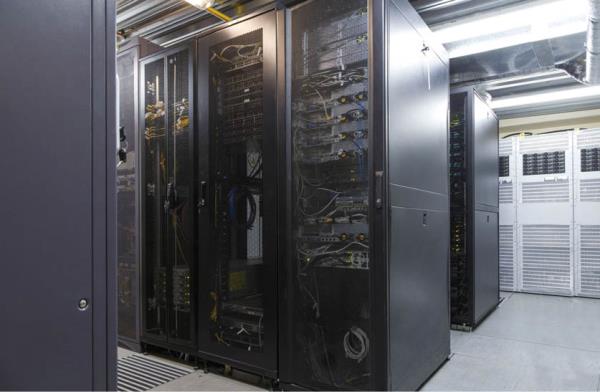03 April 2025

Times are a changing. The rampant digitisation taking place across the continent is causing a fundamental shift in MNO focus...
The demands placed on data centres by Africa’s mobile network operators (MNOs) are driven by the need for high-speed, low-latency services, energy-efficient infrastructure, geographical distribution, and a constant push for scalability.
“MNOs demand ultra-low latency, high bandwidth, and robust network connectivity to support critical telecom operations, unlike traditional data centre users focused more on storage and processing,” explains Nikki Blake, CEO & Co Founder, GTSS Global Technologie Sustainable Solutions; and ADCA General Secretary.
“In my experience, the differences (as always) are driven by the needs, where typically MNOs manage large volumes of real-time mobile data traffic, including voice, messaging, video streaming, and internet browsing, all of which require low latency, high availability, and robust connectivity. This is crucial for maintaining seamless customer experiences,” notes Stefano Resi, Head of Data Center Sales for Middle East & Africa, Nokia. “Vice versa, other data centre players (such as enterprises or cloud service providers) might prioritize bulk data storage or business applications that do not have the same level of latency sensitivity.”
Further, the differences extend beyond the technical challenges linked to telecommunications services delivery, through to the hardware itself.
“Historically, MNOs have built and maintained their own infrastructure, traditionally with a reliance on -48V DC power systems. Unlike traditional data centre users, who primarily depend on AC power and standardized cooling, MNOs require specialized power architectures, including large-scale rectifier systems and high-ampere-hour battery banks, bulky distribution systems due to the low DV voltages,” highlights Menno Parsons, Founder and Managing Director, Master Power Technologies.
“MNOs usually have the legacy requirements of -48V DC. The data centre operator must then be able to provide a central DC power panel or allow a customer to install individual rectifiers, which they must be able to bill,” confirms Gbenga Adegbiji, CEO for Geniserve; and ADCA Board Member. “Moreover, some MNOs may have racks and equipment which may not follow the regular airflow of front to back but bottom to top. This usually requires careful planning when considering rack positioning and air circulation.”
Non-negotiables
For colocation providers to successfully host MNOs, there exist several key requirements that go beyond standard colocation setups. But what exactly is non-negotiable?
“The most obvious answer would be an adequate power source. When using the term ‘adequate’ I mean Secure, Stable, Scalable,” asserts Resi. “Less obvious, perhaps, is the capability of a colocation player to connect multiple networks and possibly peer them internally. This is an extremely attractive ‘feature’ for MNOs that can save costs, reduce latency and increase reliability. This is however only possible if the co-locator equips its data centre with a layer of flexible, secure, programmable data centre networking. With this move the operator will move out of the pure ‘real estate’ game and be ready to offer new extra services to its tenants.”
“For co-locators to successfully host MNOs, they need equipment such as high-capacity servers, routers, switches, and cooling systems,” adds Timi Fadeyi, Head - Data Center, Galaxy Backbone Nigeria; and ADCA Treasurer. “Redundant power supplies and backup generators are also essential to ensure uninterrupted service. While many African co-locators have started to invest in this equipment, there is still a gap in meeting the full requirements of MNOs.”
Returning to the topic of power types, Parsons asserts that to host MNOs effectively, co-location data centres must accommodate both AC and DC power requirements. Although many modern telecom vendors now integrate AC-DC power supplies into their equipment, legacy Mobile Switching Centers (MSCs) and core network
infrastructure still require dedicated DC power distribution. Key infrastructure components include:
- High-capacity rectifier and battery systems to support -48V DC loads.
- Low-latency network interconnects for seamless traffic routing.
- Carrier-neutral environments to allow MNOs to interconnect with multiple network providers.
- Edge computing capabilities to support distributed network architectures.
- Scalable power and cooling solutions to handle fluctuations in network traffic demand.
“Not every African co-location provider is equipped to meet these demands,” says Parsons. “Many facilities are designed with enterprise or cloud customers in mind, where AC power and standardized rack configurations dominate. However, leading co-locators are adapting to these requirements, particularly as MNOs increasingly turn to external facilities for expansion.”
Reliable access to DC power is a must for MNOs, as is access to fibre diversity for access to towers and additional data centres.

“Resilient power infrastructure such as generators, UPS systems, and DC Rectifiers, in what is known as an N+1 (or better) setup, are critical to MNO deployments. An N+1 setup provides a minimal level of resiliency by adding an additional backup component — a UPS, HVAC system or generator — to the N architecture to ensure uptime in the rare case a system goes offline. When one system is offline, the extra component takes over its load to ensure things continue to operate as expected,” shares Roderick de Boer, Commercial Development Director – Africa at Equinix. “Due to the investment required for this level of redundancy, N+1 architecture is not universally available across all African data centre operators for all parts of their infrastructure, leading to lower SLAs than often required for MNOs.”
Additionally, “co-locators should be aware of the high diurnal variation of data movements through the day, with ‘peak’ demands becoming a possible choke point to their operations,” opines Jonathan Duncan, application engineering and technical solutions director, Africa at Vertiv. “To address this, they should therefore bolster their support systems and ensure that their data centres have the capacity to meet these peak demands. A robust power management system, that can shed non-critical loads, may be a requirement for the smaller edge-type, direct-current data centre. Additionally, differentiating between priority and non-priority subscribers can help optimise resource allocation and maintain service continuity during peak periods.”
Elasticity is key
One of the key differentiators between MNOs and other data centre users is the fluctuating traffic volumes. Handling this fluctuating user traffic, while complying with Service Level Agreements (SLAs), requires colocation providers to implement flexible, scalable, and resilient infrastructure solutions.
“MNO traffic is inherently variable, influenced by network congestion, seasonal patterns, and large-scale events. Unlike enterprise workloads, which can be somewhat predictable, MNO traffic spikes can be sudden and intense,” confirms Parsons. “Co-location providers must address this by deploying scalable power and cooling solutions that can rapidly adapt to demand surges; offering flexible interconnection capacity, ensuring that traffic peaks do not cause network bottlenecks; implementing AI-driven resource management to optimize energy use and load balancing dynamically; and ensuring robust SLA compliance with proactive monitoring, automated fault detection, and rapid response frameworks. The best co-location facilities are designed for elasticity, allowing MNOs to scale resources without compromising network performance or reliability.”
Meanwhile, Resi says that the SLA should be intimately connected with the visibility and control of the networks: “if the co-locator is in a pure real estate type of game, then its SLA will be purely on power and connectivity. The technical value added by the co-locator will be low and so will the price. Vice versa, if the co-locator manages to start offering the MNO control over its network, evolved protection mechanism, fast traffic engineering, then it can offer a much higher level of service and value (hence price) to its MNO tenants as well as the other enterprises.”
Changing perspectives

The rise in mobile data usage, the rollout of 5G, and the need for reliable, secure, and scalable infrastructure make MNOs essential customers for colocation providers.
“Historically, many MNOs operated their own enterprise data centres, with some even offering co-location services. However, larger-scale, purpose-built data centre facilities have proven to be more efficient, making it more common to see MNOs leasing space. This trend, and the rate of growth in data consumption, suggests that MNOs will become increasingly significant to the co-location industry,” notes Duncan.
“As large-scale high-quality colocation data centres become pervasive, there is now little reason for MNOs to have their own data centres,” opines Ayotunde Coker, CEO, Open Access Data Centre; and ADCA Chairman. “This must move from afterthought to a strategic decision to leave the management of the data centres and capital expenditure to expert colocation providers. MNOs can focus their capital deployment into the network architecture and enhanced customer services.”
Indeed, “MNOs are becoming an increasingly important part of the co-location business, particularly as the telecom industry shifts toward outsourcing non-core infrastructure. While cloud providers, enterprises, and financial institutions still dominate Africa’s colocation market, MNOs are recognizing the benefits of shared infrastructure — reducing capital expenditure, improving redundancy, and gaining access to multi-network ecosystems,” says Parsons.
However, the degree of focus on MNOs as data centre customers varies by provider and market maturity…
“MNOs are a significant part of the co-locator business. They contribute a substantial portion of the revenue and drive the demand for advanced infrastructure and services,” says Fadeyi. “However, co-locators also serve other end users, such as internet service providers (ISPs) and enterprises, making MNOs an important but not exclusive part of their business.”
“Five years ago, I would have said that MNOs are the primary, so-called anchor customer of a generic co-locator. This was when we started noticing several mobile operators building their own colocation companies and using their mobile business unit as anchor customers. Lately, however, I see that all colocation players are trying to win the business of the great American hyperscale companies that would use 50% (or more) space in their data centres, hence becoming the de-facto anchor customer,” shares Resi.
The end of an in-house era?
Whether Africa’s colocation providers can ultimately meet the needs of the continent’s MNOs or if in-house data centre ownership is a better bet depends on several factors, including the evolving infrastructure demands of MNOs, the maturity of colocation services in different regions, and the trade-offs between using colocation services versus building and managing in-house facilities.
Blake says that, while co-locators can meet many needs, in-house data centre ownership may be preferable for MNOs requiring bespoke infrastructure and greater operational control.
“Africa’s co-locators are making strides in meeting the needs of MNOs, but there are still challenges,” adds Fadeyi. “In-house data centre ownership can offer more control and customization, but it requires significant investment and expertise. Co-locators provide a cost-effective solution with shared infrastructure, but they need to continue upgrading their capabilities to fully meet MNOs’ requirements.”
Coker agrees that the high-quality data centre requirements for MNOs can be met by the top end colocation providers, but “where there is no availability, out of necessity, MNOs may have to build their own data centres. Regulators may bring about systemic change if MNOs are encouraged to aggregate data centre infrastructure with colocation providers and thereby encourage the investment by colocation providers in high quality infrastructure.”
In contrast, “I believe that the era of in-house data centres for MNOs is definitely over. Security, reliability, cost efficiency, internet peering, latency, and more are all parameters that make the colocation model extremely attractive for MNOs,” says Resi.
Parsons, too, agrees that the in-house data centre model has become less viable: “data centre management is not a core competency for most telecom providers, and maintaining self-built facilities is costly and operationally complex. While some MNOs in Africa remain reluctant to fully transition, the global trend is clear — telecom operators are exiting the colocation business and focusing on network services rather than infrastructure ownership.”
With the right investment in carrier-neutral connectivity, power support, and scalable infrastructure, Africa’s leading co-location providers can meet the needs of the modern MNO – marking the beginning of a new infrastructure model.
“This is a critical time for Africa’s data centre and telecom industries,” shares Parsons. “The shift towards colocation presents significant opportunities but also challenges in aligning infrastructure capabilities with telecom-grade requirements. MNOs that embrace strategic partnerships with well-equipped co-location providers will benefit from greater scalability, improved redundancy, and reduced operational risk. Those that hesitate risk falling behind in an increasingly interconnected digital ecosystem.”





.gif?lu=925)

